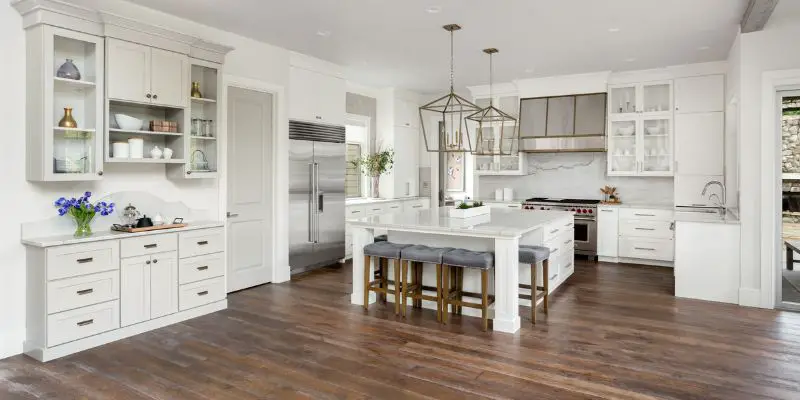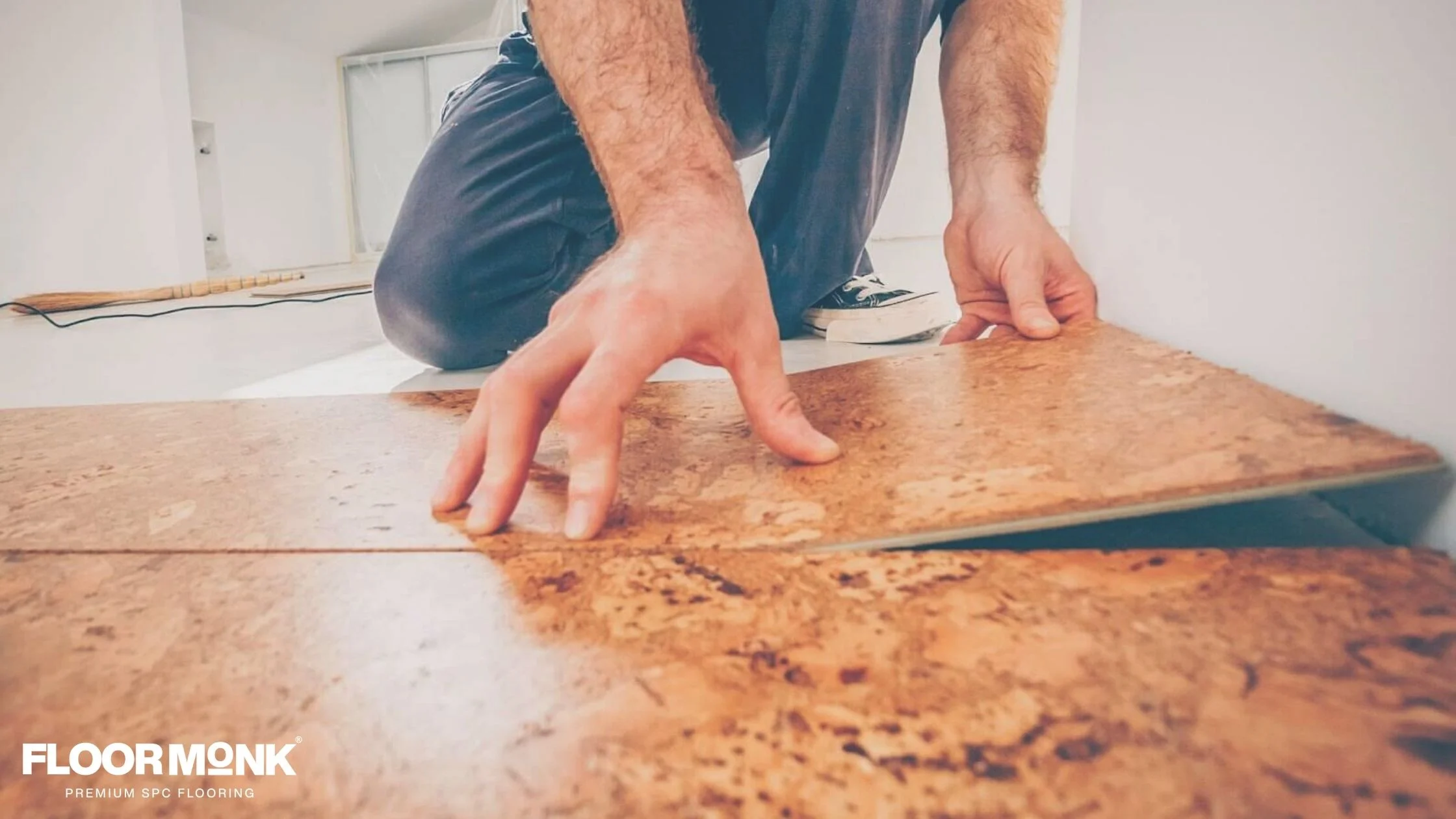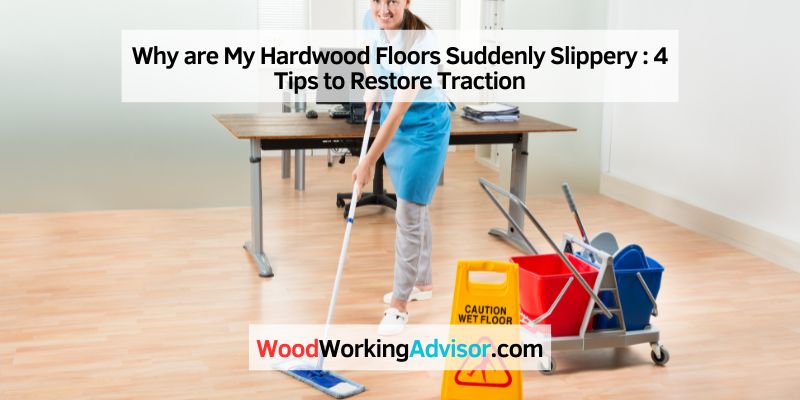Hardwood floors can become suddenly slippery due to the buildup of oils, wax, or dirt on the surface. The slippery coating can be caused by improper cleaning techniques or the use of certain cleaning products that leave residues on the floor.
Common Causes Of Slippery Hardwood Floors
There’s nothing worse than the feeling of your feet sliding across your hardwood floors, making every step a potential accident waiting to happen. Understanding the common causes of slippery hardwood floors is the first step to addressing this issue and restoring your home’s safety. In this article, we will explore three common reasons why your hardwood floors may suddenly become slippery.
Seasonal Changes
Seasonal changes can have a significant impact on the slipperiness of your hardwood floors. When the weather shifts from dry to wet, moisture can seep into the wood, causing it to swell and become smooth. This increased moisture can make the surface slippery and dangerous to walk on. Similarly, during the winter months, the dry air can cause the wood to shrink, creating gaps that collect dust and moisture. This accumulation can contribute to a slippery floor surface. By understanding these seasonal changes, you can take the necessary precautions to prevent slips and falls.
Wax Or Residue Build-up
Another common cause of slippery hardwood floors is the build-up of wax or residue. Over time, cleaning products, particularly those with a wax base, can leave behind a thin film on the wood surface. This film can create a slippery layer, making the floor hazardous to walk on. Additionally, dust, dirt, and grime can accumulate on the surface, further exacerbating the problem. Regular cleaning and proper maintenance can help prevent the build-up of these residues and keep your hardwood floors safe and slip-free.
Uneven Floor Finish
An uneven floor finish is yet another reason why your hardwood floors may become slippery. When the floor finish starts to wear off or becomes worn down in certain areas, it can create a smooth and slippery surface. This is especially common in high-traffic areas or places where furniture is frequently moved. The lack of traction on these worn-out spots can turn your once-safe floors into a slipping hazard. To address this issue, it is important to maintain and periodically refinish your floors to ensure an even and slip-resistant finish.
By identifying the common causes of slippery hardwood floors, you can take the necessary steps to prevent accidents and maintain a safe living environment. Whether it’s seasonal changes, wax or residue build-up, or an uneven floor finish, addressing these issues promptly will restore the grip and ensure the longevity of your hardwood floors.

Impact Of Slippery Floors
Worried about suddenly slippery hardwood floors? The impact of slick surfaces could be caused by various factors like wax buildup, oil residues, or high humidity levels. Identifying and addressing the root cause is vital in preventing slips and falls while keeping your floors safe and hazard-free.
Safety Hazards
Slippery hardwood floors pose significant safety hazards, especially in high-traffic areas or households with elderly individuals, children, or pets. The risk of slips and falls increases dramatically when the floor’s surface becomes slick and loses its natural grip. This can lead to injuries ranging from bruises to sprains, fractures, or even more serious consequences. It is crucial to address the issue promptly to minimize the potential harm to those using the floor.
Potential Damage To The Floor
Aside from the safety concerns, slippery floors can also result in potential damage to the hardwood itself. When individuals try to compensate for the lack of traction by wearing shoes with rugged soles, the floor may suffer scratches and scuffs. Additionally, as people slip and slide on the slick surface, the pressure exerted by their movements can cause the wood to wear down unevenly, leading to an unsightly appearance and requiring costly repairs.
Effective Ways To Restore Traction
Proper Cleaning Techniques
When maintaining your hardwood floors, use a soft microfiber mop and a gentle cleaner to prevent residue buildup that could cause slippery surfaces.
Regularly sweep the floors to remove debris and dust that can contribute to slipperiness, and use a damp mop with minimal water to avoid any excess moisture and potential hazards.
Application Of Traction-enhancing Products
To combat slippery hardwood floors, consider applying an effective traction-enhancing product that is specially formulated for use on wood surfaces. Look for products designed to add a grip without leaving a sticky residue behind.
Applying a high-quality anti-slip treatment or finish can provide extra grip without compromising the natural beauty of your hardwood floors.

Credit: floormonk.com
Preventive Measures To Avoid Slipperiness
Slippery hardwood floors can be a major hazard in any home. Not only can they lead to falls and accidents, but they can also cause damage to your flooring. To prevent slipperiness and keep your hardwood floors safe, it’s important to implement regular maintenance practices and choose the right floor cleaning products. By following these preventive measures, you can ensure that your hardwood floors remain slip-free and maintain their natural beauty for years to come.
Regular Maintenance Practices
Maintaining your hardwood floors on a regular basis is essential to prevent slipperiness. Here are some key maintenance practices to keep in mind:
- Regular sweeping: Sweep your floors daily to remove any dust, dirt, or debris that can cause slipperiness.
- Mop with care: When mopping your hardwood floors, use a damp mop rather than a soaking wet one to avoid excess moisture that can lead to slipperiness.
- Wipe up spills immediately: Accidental spills should be wiped up promptly to prevent moisture from seeping into the wood and making the floor slippery.
- Avoid high-heeled shoes: Discourage wearing high-heeled shoes on your hardwood floors, as they can leave marks and potentially cause slips.
- Use doormats: Place doormats at entryways to trap dirt and moisture before it reaches your hardwood floors.
Choosing The Right Floor Cleaning Products
Using the correct floor cleaning products is vital to maintain the beauty and safety of your hardwood floors. Here are some guidelines to help you choose the right products:
- Read labels carefully: Ensure that the cleaning products you use are specifically formulated for hardwood floors.
- Test in inconspicuous areas: Before applying any new cleaning product to your hardwood floors, test it in a small, inconspicuous area to check for compatibility and potential slipperiness.
- Avoid wax-based products: Steer clear of wax-based cleaners, as they can leave a residue that makes your floor slippery.
- Opt for water-based cleaners: Water-based cleaners are generally safe for hardwood floors and provide effective cleaning without leaving behind a slippery residue.
- Follow manufacturer’s instructions: Always follow the manufacturer’s instructions when using any cleaning product to ensure proper application and maximum safety.
By adhering to these preventive measures and incorporating them into your regular cleaning routine, you can maintain slip-free hardwood floors that are both aesthetically pleasing and safe for your family and visitors.
Professional Assistance And Additional Tips
When it comes to maintaining the safety and beauty of your hardwood floors, professional assistance and additional tips can play a vital role. From seeking professional floor refinishing services to following best practices for long-term traction maintenance, these solutions can help you address the sudden slipperiness of your hardwood floors. Let’s take a closer look at these strategies that will not only improve the traction of your floors but also provide a safer environment for you and your family.
Seeking Professional Floor Refinishing Services
If your hardwood floors have become suddenly slippery, seeking professional floor refinishing services can be an effective way to restore their traction. Refinishing is a process that involves removing the old finish, repairing any existing damage, and applying new layers of finish to your floors. This process helps to eliminate any buildup of dirt, grease, or other substances that might contribute to the slipperiness of the surface.
Professional floor refinishing companies have the expertise and equipment necessary to perform the job efficiently and effectively. They can assess the condition of your floors, identify any underlying issues, and recommend the most appropriate refinishing technique. By opting for professional assistance, you can ensure that your hardwood floors are revitalized and their traction is restored, making them safe and slip-resistant once again.
Best Practices For Long-term Traction Maintenance
In addition to seeking professional assistance, following best practices for long-term traction maintenance can help prevent your hardwood floors from becoming slippery in the future. Here are some valuable tips:
- Regular cleaning: Maintain a consistent cleaning routine to remove dust, dirt, and debris from your floors. Use a soft broom or a vacuum cleaner with a hardwood floor attachment to prevent scratching the surface.
- Proper footwear: Encourage family members and guests to wear non-slip socks or shoes when walking on your hardwood floors. Avoid footwear with hard soles or high heels that can cause scuff marks and increase the risk of slipping.
- Area rugs and mats: Place area rugs or mats in high-traffic areas, such as entryways or kitchen sink areas, to provide additional traction. Ensure these rugs are properly secured to prevent slipping.
- Regular maintenance: Keep an eye out for any signs of wear and tear on your hardwood floors. Promptly repair any damaged areas to maintain the overall integrity of your flooring.
- Traction-enhancing products: Consider using traction-enhancing products specifically designed for hardwood floors, such as non-slip coatings or adhesive strips. These products can provide an extra layer of protection and improve traction.
By incorporating these best practices into your regular maintenance routine, you can minimize the risk of slippery hardwood floors and maintain their beautiful appearance for years to come.
Frequently Asked Questions For Why Are My Hardwood Floors Suddenly Slippery
How Do You Fix Slippery Hardwood Floors?
To fix slippery hardwood floors, there are several remedies you can try. Apply an anti-slip treatment to the surface, such as a non-slip floor finish or adhesive strips. Place rugs or mats with non-slip backings. Use gripper pads under furniture legs.
Ensure proper cleaning and maintenance to prevent buildup.
Why Is My Floor Still Slippery After Mopping?
The floor may still be slippery after mopping due to residue left behind by the cleaning solution. Make sure to thoroughly rinse the floor after mopping to remove any leftover residue. Additionally, check if the floor is sealed properly, as an inadequate seal can cause the floor to remain slippery.
How Do I Keep My Wood Floor From Slipping?
To prevent your wood floor from slipping, use non-slip rug pads, apply anti-slip adhesive tapes, and place furniture pads under legs. Keep the floor clean and dry to avoid slippery surfaces. Avoid using slick cleaning products and consider applying a non-slip floor finish.
Why Is My Laminate Floor Suddenly Slippery?
Your laminate floor may suddenly become slippery due to the buildup of dirt, oils, or cleaning residues. Regular cleaning and using non-slip products can help prevent and resolve this issue. Proper maintenance and cleaning techniques are essential to maintain the slip resistance of your laminate floor.
Conclusion
Keeping your hardwood floors clean and dry is essential to prevent slipperiness. Regular maintenance and the use of non-slip treatments can help restore traction. Understanding the cause of the slipperiness is crucial, as it may be connected to the floor’s finish, cleaning products, or environmental factors.
By addressing these issues, you can ensure your hardwood floors remain safe and slip-free for years to come.



One thought on “Why are My Hardwood Floors Suddenly Slippery: 4 Tips to Restore Traction”